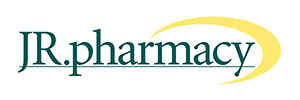Over the last five years the financial performance of pharmacy has been subject to the following.
- Flat script growth;
- Loss of retail sales;
- Flat to declining retail margin;
- Loss of customers;
- A period of rising overheads, namely rent and wages.
Thankfully, increasing substitution and trading terms offered by suppliers has generated all the net profit growth in pharmacy, counteracting the negative influences above.
Time to change
Retail continues to be one of the most competitive environments in business. For pharmacy, the challenges are opening selling lines being continually lost to all other retail channels and also the rescheduling of products changing customer behavior.
Overlay that with the fact that the profitability of the dispensary business will not continue forever. The dispensing of scripts is not a competitive advantage just as discounting prices is not sustainable unless your business model (cost of doing business) enables you to.
For the last financial year and subsequent few months, pharmacy has seen unprecedented profitability per script dispensed off the back of the growth in generics.
However, the Rudd Government’s announcement on 2 August to accelerate the price disclosure process, which will effectively squeeze the profit out of the dispensing of scripts over the next two years, has brought into sharp focus the need for pharmacy to change something to enable it to capture other income streams and better manage costs to become sustainable into the future.
The issue is that with good profits, the impetus to change has been low. However when profits decline it is mostly too late for change.
At this point in the business lifecycle most pharmacies will not win the discount game so I would avoid discounting at all cost.
In my view, based on the pharmacies I have seen, the following areas are a great place to start ‘investing’ to make sustainable change:
- Specialise – The issue at large is that many pharmacies have strayed from being specialists in healthcare solutions and ended in a place where the pharmacist is caught in process and they in fact are not helping the customer with outcomes. Choose something to be a specialist in, develop the category (refer following points) and have a significantly differentiated customer offer that will give you something unique to market.
- Store design & layout – The pharmacy fit out should only last about five to seven years. However, over the years the life of the fit out has been extended to the point where the pharmacy often looks uninviting. Furthermore, with a switch to service income streams, most fit-outs older than 5 years will not be able to manage the switch to the customer engagement that is required in the new paradigm. You need to understand what is required to enhance the customer’s experience and in turn drive customer traffic and the average sale up.
- Merchandise offer– does it provide clear solutions and outcomes for the customer that they can see and understand? Many of the pharmacies that I have visited over the years display characteristics akin to a convenience store – that is they try to be ‘everything to everyone’ in a homogenous product environment – and they all essentially look the same. The merchandise offer must be focused around points 1 and 2 above. By way of example, 10% of the total retail space should be allocated to the low profit traffic drivers and 90% given to the higher sales and margin categories I call the profit drivers. Most pharmacies are currently the other way around.
- Extract the pharmacist from the dispensing process– “Good management consists in showing average people how to do the work of superior people” John D Rockefeller. I have often wondered why pharmacists are content doing menial tasks at an average cost of $35+ per hour, when the same tasks can be undertaken by trained staff on say $20 per hour. Furthermore, if the pharmacist can be removed from process and redeployed in counseling, moreover in the professional services area of retail, it has been proven that sales actually increase.
- Staff expertise – do you have confidence in the pharmacy staff that they can provide the customer with the solution to their problem if you get 1, 2 or 3 above right? If not, the issue could be that you have the wrong people ‘on the bus’. Employ for attitude.
Cost of change
There are many costs in changing the current format of a pharmacy, some of which are tangible and some are intangible.
It is the intangible costs (call it culture) that can prove too expensive and quash the opportunity before a full review of the numbers and understanding of the outcomes can be absorbed. Equally, vision without an appropriate strategy is a dream.
It is imperative that the cost is viewed as an ‘investment’ in the future of the pharmacy and therefore you should be chasing a better return on investment than you would have otherwise achieved had you, a) done nothing or b) invested your money elsewhere. I continue to contend that the business of pharmacy should and does produce a return on investment in excess of 20% and therefore the industry remains a solid investment for those already in ownership and for those looking to enter ownership (at the right price). The issue is how to maintain and grow this return in the future.
Give it time – there is no ‘silver bullet’
The pharmacies I have seen undertake significant change in-store specializing in health solutions do not get instant results. In fact they can experience a short period of negative sales growth as both the customers and staff adjust to the changes. However, those that persevere get sensational outcomes, not least of which is the increase in professional satisfaction and profitable customer retention.
My advice is to stick with it. Operating the pharmacy as you have (or the previous owner has) always done is not an option. Times have changed; remuneration will decrease if you do nothing. Understand what you want the pharmacy to look and feel like and seek help to achieve your vision.
View change not as a cost but as an investment in the future of the pharmacy. You will be surprised at the improved return on your investment.
Norman Thurecht, Partner, JR Pharmacy Services




